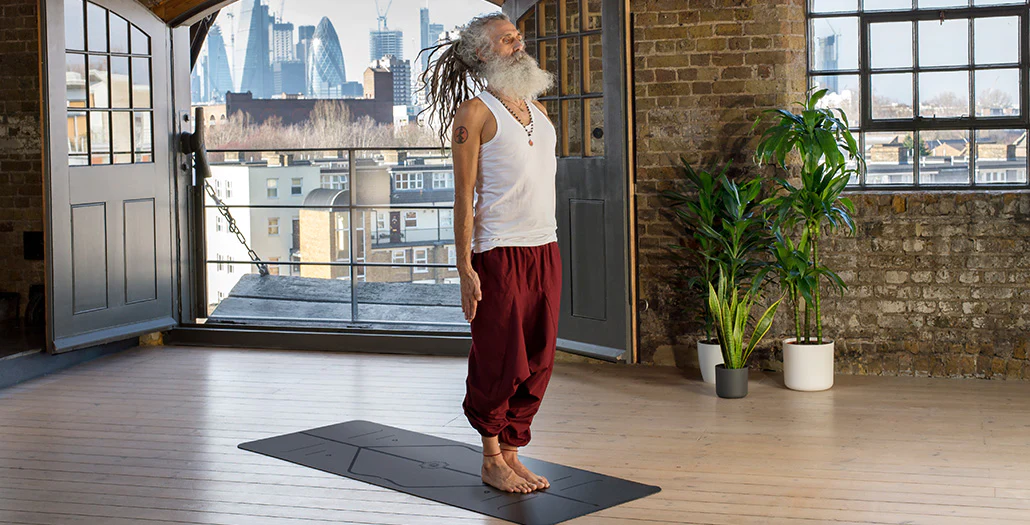Mountain Pose, or Tadasana, is a foundational yoga pose suitable for all levels. Despite its apparent simplicity, it offers numerous benefits. Tadasana works on strengthening the legs, core, and back muscles, contributing to improved posture. This pose also provides an opportunity to practice mindful breathing, enhancing your focus and calming the mind. Feeling grounded and centered, Tadasana fosters a sense of stability and balance. Whether you’re a beginner or an experienced yogi, incorporating Mountain Pose into your routine can bring both physical and mental well-being.
Benefits Of Mountain Pose
- Posture Improvement:
- Foundation for all standing postures.
- Enhances posture, roundedness, stability, and body awareness.
- Physical Benefits:
- Improves alignment and balance.
- Increases height.
- Strengthens leg muscles.
- Engages abdominal muscles gently.
- Enhances spinal health.
- Mental Focus:
- Encourages focus and alertness.
- Cultivates a sense of inner peace and stability.
- Emotional Well-being:
- Promotes self-confidence.
- Fosters openness and mental clarity.
- Cultivates a sense of being rooted in the present moment.
Instructions (Step-by-Step)
- Foot Placement:
- Stand with your feet hip-distance apart.
- Lift and spread your toes, then lower them back down, connecting with the ground.
- Lower Body Engagement:
- Lift your knee caps without locking the knees.
- Lift the thigh muscles up and back, with a slight inner thigh turn.
- Pelvic Alignment:
- Imagine softening the skin of the lower back.
- Drop the tailbone (don’t tuck it under) for a neutral pelvis position.
- Engage pelvic floor muscles (Mula Bandha) and draw the abdomen in and up (Uddiyana Bandha).
- Upper Body Alignment:
- Open your chest, lifting the top of the sternum.
- Keep ribs soft.
- Broaden your collarbones, firm your shoulder blades onto your back.
- Head and Face:
- Ensure ears are over the shoulders.
- Lift the crown of the head.
- Soften the face, especially the eyes and jaw.
Common Mistakes Of Mountain Pose
- Lack of engagement in various body areas.
- Feet pointed outward instead of straight.
- Weight unevenly distributed on inner or outer edges, heels, or balls of feet.
- Over-arched lower back.
- Shoulders slouching or chest overly broadened.
- Inactive arms, hands, legs, glutes, and core.
Precautions Of Mountain Pose
If you have any of the following conditions, consult your doctor before practicing Tadasana:
- Low blood pressure
- Insomnia
- Headache
- Migraine
- Recent or chronic injury to the neck or back
Modifications + Variations
| Modifications | Variations |
|---|---|
| Stand with your back against a wall for support and alignment awareness. | A) Fingers interlaced with index finger pointing up. |
| B) Arms down with palms resting against the outer thighs. | |
| C) Palms together in front of the heart in Anjali mudra. |
Tips For Beginners
- Pelvic Adjustment:
- If neutral pelvis is challenging, bend your knees slightly.
- Drop the tailbone while keeping the knees bent.
- Straighten the knees without changing the pelvis position.
- Thigh Engagement:
- Use a block between the thighs.
- Squeeze the block and roll it slightly backward.
- Feel the engagement and rotation of the thighs.
How To Practice Mountain Pose
- Stand tall with feet hips distance apart.
- Distribute weight evenly into both feet.
- Roll shoulders back.
- Bring arms by your sides, palms facing forward or in towards your body.
- Fix gaze softly in front of you or close your eyes.
- Hold for 5-7 breaths.
Learn this pose perfectly under our certified yoga trainer. Join our online yoga classes now. Browse More Standing Yogasanas and complete Yogasanas Library.






